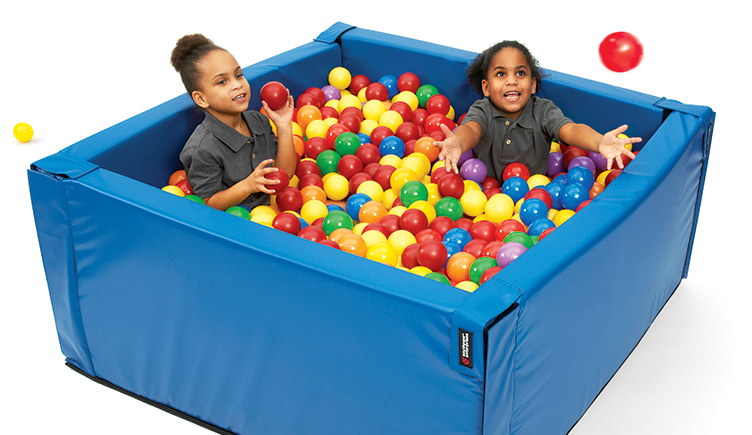Functional praxis, motor planning and visual processing are a few primary outcomes in sensory integrative intervention within pediatric occupational therapy. The visual sensory system significantly contributes to one’s ability to take in and interpret information to produce an appropriate motor response. Children who demonstrate difficulty with their visual efficiency and visual processing skills may demonstrate difficulty with tracking, focusing and coordinating their eyes to interpret essential stimuli in their environment. Some examples may include difficulty with smooth pursuits to follow along while reading, or the ability to converge/diverge their eyes while throwing and catching a ball In some cases, congenital or neurological conditions may result in convergence insufficiency, strabismus, nystagmus, amblyopia or visual field loss.
Treatment approaches to address functional vision must consider the other sensory systems (specifically vestibular and proprioceptive) that serve to provide information of one’s head and body position in space. The visual and vestibular systems work closely to stabilize vision through the vestibulo-ocular reflex (VOR). Therefore, it is important to provide enhanced vestibular input with visual tasks in intervention to promote functional vision.
Southpaw offers a great array of equipment to help provide a variety of experiences for movement and visual tracking.
Promoting Visual Fixation

Promoting Oculomotor Skills (Saccades, Smooth pursuits, Convergence/Divergence)
Promoting Depth Perception and Use of Central/Peripheral Vision
-Adding a balance demand by navigating a sequence of stepping stones or walking heel to toe on a balance beam without bumping into the bolsters.
-Changing the distance and height of the suspension to target depth perception and accommodation.
-Adding additional moving suspended objects, such as a Marsden ball, to promote smooth pursuits or saccades.
 Promoting Binocularity
Promoting Binocularity
Using the principles of sensory integration, OTs can target a variety of sensory systems with equipment and adjust/adapt as needed in order to always provide the “just right challenge” for the pediatric population. With Southpaw’s equipment, the opportunities are endless to promote binocularity, efficient ocular motor skills and visual accommodation. Be on the lookout!
References:
Case-Smith, J. & O’Brien, J.C. (Eds.) (2020). Occupational therapy for children and adolescents (8th ed.). Elsevier/Mosby. Scheiman, M. (2011). Understanding and managing vision deficits: A guide for occupational therapists . SLACK.



